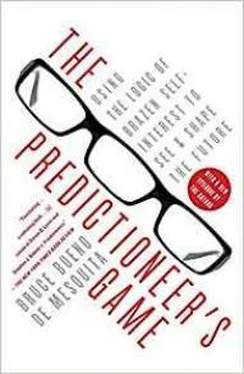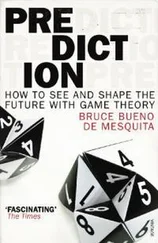When an agreement is demanding, lots of signatories cheat; when it isn’t demanding, there is lots of compliance with what little is asked for, but then there is also little if any beneficial effect. Sacrificing self-interest for the greater good just doesn’t happen very often. Governments don’t throw themselves on hand grenades. 4
It really isn’t easy being green, just as Kermit the Frog has been telling us for years. Who will monitor green cheaters? The answer: interest groups, not governments; and interest groups are rarely a match for governments. Who will punish the cheaters? The answer: practically no one. The cheaters-to-be were among the rule makers when they agreed to the universal protocol. Cheating is an equilibrium strategy for many polluters, a strategy backed by the good faith and credit of their governments. Why will governments back cheaters? The answer: incentives, incentives, incentives!
Who has what incentives? There is a natural division between the rich countries whose prosperity does not depend so much on toasting our planet and the poor countries who really have no affordable alternative (yet) to fossil fuels and carbon emissions. They have an incentive to do whatever it takes to improve the quality of life of the people they govern.
The rich have an incentive to encourage the fast-growing poor to be greener, but the fast-growing poor have little incentive to listen as long as they are still poor. As the Indian government is fond of noting, sure, they are growing rapidly in income and in carbon dioxide emissions, but they are still a pale shadow of what rich countries like the United States have emitted over the centuries when they were going from poor to rich.
If the poor listen to the rich they could be in big political trouble. And when the fast-growing poor surpass the rich, the tables will turn. China, India, Brazil, and Mexico will then cry out for environmental change because that will protect their future advantaged position, while the relatively poor of that day, one or two or three hundred years from now, will resist policies that hinder their efforts to climb to the top. The rich will even fight wars to keep the rising poor from getting so rich that they threaten the old political order. (The rising poor will win those wars, by the way.)
There is also a natural division between politicians whose constituents care about the planet more than they care about their short-term quality of life—those are few and far between—and politicians whose constituents say they care about the planet but in reality often vote growth, not green. If you doubt it, take a look at the election record of green parties around the democratic world. Moreover, who will endure the political and economic costs when poor countries trot out starving children—children who would not be starving if their families could just keep on burning cow dung! We are quicker to be softhearted than we are to be green, and really, is that so bad?
So how might we solve global warming and make the world in five hundred years look attractive to our future selves? We twenty-first-century folk know of well over a hundred chemical elements and a long list of forces of nature. In Christopher Columbus’s time, people pretty much only knew rain, wind, fire, and earth. They also knew hardly anything about exploiting rain, wind, and fire, but we sure do, and surely we will know more in the future. Rain, wind, and fire—they can and will solve global warming for future generations. I interpret the figures above to suggest that the reason mandatory emission standards will not be so high in 2050 is because few will care to fight that fight. It won’t matter. New wind, rain, and solar technologies will be solving the problem for us.
Climate change due to global warming will add to our supply of rain, wind, and fire, and if it raises the oceans, kicks up fierce storms, and bathes us in massive quantities of BTUs, then it also adds to our urge to exploit these ancient forces just as their increased power makes us worry more. As climate change would generate more of these sources of energy, it would also create a beautiful synergy which would in turn prevent global disaster. How could this be?
There is an equilibrium at which enough global warming—a very modest amount more than we may already have, probably enough to be here in fifty to a hundred years (as suggested by the game’s analysis)—will create enough additional sunshine in cold places, enough additional rain in dry places, enough additional wind in still places, and, most important, enough additional incentives for humankind that windmills, solar panels, hydroelectricity and as yet undiscovered technologies will be the good, cheap, evenly distributed, and clean mechanisms to replace the fossil fuels we use today. Global warming, in other words, induces a self-solving dominant strategy in which everyone elects some mix of wind, rain, and fire technologies (and maybe even some fossil fuels in moderation) precisely because the abundance of these forces, and the attention drawn to them, will make them affordable solutions to arrest further warming—long before we all roast, drown, or are blown beyond the moon, beyond the stars, and all the way to Oz.
I am optimistic for the long future. We have already warmed enough for there to be all kinds of interesting research going on into using wind and rain and solar fire. Already there are serious discussions of solar panels and cosmic ray catchers in space and more and more windmill farms will sprout up on earth. Today such pursuits take more sacrifice than most people seem willing to make. Tomorrow that might not be true, and at that point, I doubt it’ll be too late.
And, looking out five hundred years, we’ll probably have figured out how to beam ourselves to distant planets where we can start all over, warming our solar system, our galaxy, and beyond with abandon.
Remember, we’re looking out for numero uno.
Acknowledgments

Every author happily accumulates indebtedness. This is certainly true for me. I have been doing political forecasting and engineering for nearly thirty years cloaked in academic obscurity. Three people have been instrumental in bringing attention to my research beyond the world of political science. Michael Lerner wrote a cover story on my predictioneering for Good magazine. Thanks to that article, Eric Lupfer, my literary agent at the William Morris Agency, suggested that I write a book on the subject. Without Michael’s article and without Eric’s encouragement it would never have occurred to me that people might find this work of interest. Jonathan Jao, my editor at Random House, then turned Eric’s idea and my pages into this book. I am deeply grateful to each of them for inspiring me to do this. Eric deserves additional thanks for being much more than a literary agent. He worked tirelessly at editing, rearranging, and prodding to make this a better book. I am happy to count him as my friend as well as my business associate.
My family, friends, colleagues, and students have also contributed mightily to this effort. My wife, Arlene, has given me not only the benefit of her critique of sections of this book, but her love and support for all that I do during our more than forty years together. My daughter Erin and her husband, Jason, two French horn players, not only make great music together but bring great harmony to my life. My son, Ethan, a much better applied game theorist and professor than I can ever hope to be, and his wife, Rebecca, a rabbi and an educator, add further to the harmony of my life. My daughter Gwen and her husband, Adam, two of the most fashionable and business-savvy people I know, add harmony while trying desperately—and hopelessly—to improve my sartorial splendor. They have all given me good ideas and honest feedback as this book took shape. Indeed, the title originated in a brainstorming session with Adam and Gwen, herself a terrific writer. I also owe special thanks to my sisters Mireille and Judy, two great teachers and creative spirits.
Читать дальше













